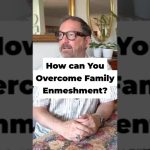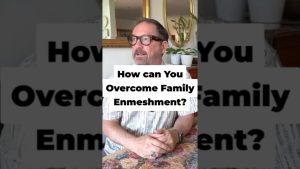The delicate dance of being with someone who fears intimacy
Have you ever felt that painful paradox—the closer you try to get to someone, the further they seem to pull away? That moment when the warmth between you suddenly cools, and you’re left wondering what invisible line you’ve crossed?
There’s a particular kind of heartache in loving someone who keeps their emotional guard up. Just when connection deepens, something shifts. Their eyes go distant. The wall comes up. And you’re left with that hollow feeling in your chest, wondering if you’ve done something wrong.
You haven’t. What you’re experiencing isn’t about your worth or lovability. It’s about attachment—the invisible blueprints we all carry for how love works and how safe closeness feels.
Understanding Avoidant Attachment Patterns
The Echo of Earlier Wounds
Before understanding attachment, you might find yourself caught in a painful cycle—reaching for connection, feeling the sting of withdrawal, then doubting your own needs and worth. After learning to recognize these patterns, many people discover a profound shift—the ability to see their partner’s distance not as rejection, but as protection against old, deep fears. And learning more about attachment may actually help you understand some of your own attachment issues. It’s actually very common for someone with avoidant attachment patterns to be in a relationship with someone with anxious attachment patterns, and they can trigger one another in a recursive manner.
“I used to take everything personally,” a client once shared with me. “When he’d pull away after a weekend of feeling so close, I’d spiral into thinking I was too much, too needy. Now I can see it differently. His withdrawal isn’t about me being unlovable—it’s about him feeling overwhelmed by connection. That understanding doesn’t fix everything, but it helps me breathe through the hard moments, and look at my own stuff as well.”
This shift doesn’t happen overnight. It comes through gentle exploration of your own attachment needs, understanding your partner’s protective patterns, and learning how to navigate the space between you with compassion—both for them and for yourself.
What Happens in the Nervous System
When someone has developed an avoidant attachment style, emotional closeness can unconsciously register as threat. Their nervous system—wired through early experiences—equates increasing vulnerability with danger. Their pulling away isn’t a conscious choice to hurt you; it’s an automatic response designed to protect them from overwhelming feelings, based on early past experiences.
Think of it like a smoke alarm that goes off at the steam from your shower. The system is doing exactly what it was programmed to do—detect potential danger and sound the alarm—even when there’s no actual fire. Your partner’s withdrawal is their system’s way of keeping them safe from what feels dangerous: the vulnerability of deep connection.
Some things live in the body long after the mind has moved on. Understanding this doesn’t mean you should silence your needs or accept emotional distance that leaves you feeling chronically unfulfilled. It simply offers a lens that can help you respond rather than react when those difficult moments arise.
Maya’s Story: Finding Balance in the Dance
Maya came to therapy feeling utterly depleted by her relationship with David. “I never know which version of him I’m going to get,” she explained during our first session. “We’ll have these amazing, connected days where everything feels so right between us. Then suddenly, he’s distant, irritable, making excuses not to see me. It makes me feel crazy, like I’m imagining the good parts.”
Over time, Maya began to recognize the pattern: the closer they became, the more David needed to create distance afterward. This wasn’t manipulation or lack of care—it was his attachment system trying to regulate the emotional intensity he found overwhelming.
“I started to notice the signs before he would pull away,” Maya shared. “There was this look in his eyes, almost like panic, when things felt too close between us. Instead of chasing him or shutting down myself, I learned to say something like, ‘I notice things feel intense right now. It’s okay if you need some space. I’ll be here.'”
This didn’t instantly transform their relationship. David still needed to do his own work understanding his avoidant patterns. But Maya found something precious: her center. She stopped taking his withdrawal as a reflection of her worth. She learned to hold space for her own needs while respecting his different rhythm of connection.
“The biggest change,” she told me months later, “was realizing I could love him without abandoning myself in the process.”
Navigating Emotional Distance in Relationships
Finding Your Way When Someone Pulls Away
When someone you love withdraws emotionally, your first instinct might be to move toward them—to seek reassurance, to understand what’s wrong, to try to fix whatever has shifted between you. But with someone who has avoidant attachment patterns, this approach often triggers more distance. Especially if your attachment style is anxious, this can be very triggering, and can activate a “Pursuer – Distancer Dynamic” that escalates the situation.
Instead, try:
“I notice we feel a bit disconnected right now. I’m here when you’re ready to talk, and it’s okay if you need some space.”
Rather than:
“Why are you pulling away again? Don’t you see how much this hurts me?”
The first approach acknowledges what’s happening without blame and offers connection without pressure. It creates emotional safety—the very thing that helps an avoidantly attached person gradually move toward more secure attachment.
This doesn’t mean silencing your own needs or accepting a relationship that leaves you chronically unfulfilled. It means learning to express those needs in ways that don’t trigger your partner’s defenses:
- “I miss feeling close to you” rather than “You never open up to me”
- “I feel alone when we don’t talk about what’s bothering us” rather than “You always shut down”
- “I need some reassurance right now” rather than “If you loved me, you’d show it more”
These shifts might seem subtle, but they can profoundly change the emotional temperature between you.
Balancing Compassion with Your Own Needs
Being with someone who has avoidant attachment patterns doesn’t mean resigning yourself to emotional crumbs or walking on eggshells forever. It means finding balance—understanding their struggles while honoring your own needs for connection.
Ask yourself:
- What helps me feel grounded when my partner withdraws?
- How can I express my needs without creating pressure?
- What other sources of connection nourish me when my relationship feels distant?
- What are my non-negotiable needs in this relationship?
- How can I respond to withdrawal with compassion rather than panic?
Sometimes, the distance between different attachment styles is simply too great. Not every relationship can bridge these gaps, especially if one partner isn’t aware of their patterns or willing to grow. But many couples do find their way to more secure connection through understanding, patience, and often, therapeutic support.
Healing Avoidant Attachment Patterns
The Healing Path Forward
Healing avoidant attachment—whether your own or your partner’s—is possible. Our attachment patterns are shaped by early experiences, but they aren’t set in stone. With awareness, compassion, and often professional support, these patterns can gradually shift toward more secure attachment.
This journey isn’t about “fixing” your partner—it’s about creating a relationship environment where both of you can heal and grow. Sometimes that means learning to give space without resentment. Other times, it means gently holding firm on your need for connection. Always, it means approaching each other with compassion for the wounded places you each carry.
If you’re loving someone with avoidant attachment, remember: beneath the distance is often a person longing for connection but afraid of what it might mean. With patience and understanding—both for them and yourself—you can find your way to each other, even if the path looks different than you once imagined.
How I Support Attachment Healing
When Professional Support Helps
Sometimes, the dance between different attachment styles becomes too complex to navigate alone. Therapy—especially with a therapist who specializes in attachment—can provide a safe space to understand these patterns and develop new ways of connecting.
I’ve seen how transformative it can be when couples begin to understand the deeper currents beneath their surface conflicts. The partner with avoidant tendencies learns how their protective withdrawal impacts their loved one. The partner who craves more connection learns how their pursuit can trigger fears of engulfment.
In this gentle exploration, both partners discover new ways of being together—ways that honor both the need for connection and the need for autonomy.
What We Explore Together
Therapy can help both partners:
- Recognize their attachment styles and triggers
- Develop communication that feels safe for both styles
- Build moments of secure connection
- Heal underlying attachment wounds
- Create a relationship that honors both people’s needs
What helped you survive back then may be keeping you stuck now. Understanding how early experiences shaped your attachment style—without judgment—creates space for new possibilities in your relationships.
Frequently Asked Questions About Avoidant Attachment
What exactly is avoidant attachment?
Avoidant attachment is a protective pattern that develops when emotional closeness feels dangerous or overwhelming. People with this style often learned early that vulnerability led to rejection or abandonment, so they unconsciously protect themselves by maintaining emotional distance. It’s not a conscious choice—it’s how their nervous system learned to stay safe.
Avoidant attachment patterns often grow out of childhood experiences of engulfment or neglect, even benign neglect. The person learned somewhere along the way that being close isn’t safe either because they will be smothered or their needs will not be met. So they may have learned to become overly self-sufficient, to not have needs, express them, or to allow themselves to feel vulnerable. They learned it’s not safe.
Why does my partner pull away when we get close?
When someone has avoidant attachment patterns, intimacy can trigger their nervous system’s threat response. The closeness that feels wonderful to you might feel overwhelming or dangerous to them. Their withdrawal isn’t about you—it’s their system trying to regulate emotional intensity that feels too much to handle.
How can I support someone with avoidant attachment without losing myself?
The key is finding balance between understanding their needs and honoring your own. Offer space without taking their withdrawal personally, but also maintain your own need for connection. Express your needs without pressure, and build other sources of support and connection in your life so you’re not depending entirely on them.
Can avoidant attachment patterns change?
Yes, attachment patterns can absolutely change with awareness and often therapeutic support. While these patterns were formed early in life as protective adaptations, they’re not necessarily permanent. With understanding and practice, people can develop more secure ways of connecting that feel safer and more fulfilling.
What’s the difference between giving someone space and enabling avoidance?
Healthy space honors both people’s needs—it provides breathing room without completely disconnecting. Enabling avoidance means accepting emotional distance that leaves you chronically unfulfilled or never addressing the pattern. The difference often lies in communication and maintaining some level of connection even during periods of space.
How do I know if my relationship can work with different attachment styles?
Many couples with different attachment styles can create secure, fulfilling relationships with understanding and effort from both partners. The key factors are both people’s willingness to understand their patterns, communicate about their needs, and work toward greater security together. If one partner refuses to acknowledge their patterns or work on the relationship, change becomes much more difficult.
What if I’m the one with avoidant attachment?
Recognizing avoidant patterns in yourself is a huge step toward healing. Notice when you feel the urge to withdraw, and try to communicate what you’re experiencing rather than just pulling away. Consider therapy to explore the roots of these patterns and develop new ways of staying connected even when vulnerability feels scary.
How long does it take to heal avoidant attachment patterns?
There’s no set timeline because everyone’s history and patterns are unique. Some people notice shifts in their awareness and responses within months, while deeper attachment healing often unfolds over years. What matters is that change is possible, and every moment of awareness and new choice contributes to the healing process.
You’re Not Alone in This Journey
Living with and loving someone who struggles with emotional intimacy can feel profoundly lonely at times. You might wonder if anyone else understands the particular pain of reaching for someone who seems just beyond your grasp. Please know that you’re not alone. Many people navigate these waters and find their way to deeper connection through understanding attachment.
Your relationship doesn’t have to be defined by distance—it can become a place where both of you learn what true security feels like. Whether you’re just beginning to understand these patterns or have been dancing with them for years, there is hope for healing, growth, and deeper connection.
The first step is often the simplest yet most profound: recognizing that beneath both the pursuit and the withdrawal lies the same human longing—to be loved, to be safe, to belong. From that place of shared humanity, healing becomes possible, one gentle step at a time.









